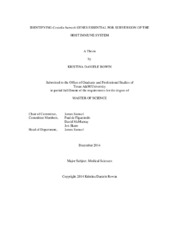| dc.description.abstract | Coxiella burnetii, the causative agent of Q fever in humans, is a Gram-negative intracellular bacterium. Although the organism was first isolated in the 1930s, little is known about the specific mechanisms underlying its virulence. This is largely due to its obligate intracellular lifestyle. Recent advances in both axenic growth and genetic manipulation of C. burnetii allowed efficient generation and isolation of random mutations and enabled more definitive studies of the genes essential for virulence. The goal of this project was to generate a large collection of specific isogenic C. burnetii mutants and employ in vitro and in vivo screens to determine the individual contributions of their affected genes to pathogenicity. We used a Himar1 transposon system to generate a library of 1) defined clonal mutants and 2) pools of random transposon mutants in order to approach saturation with non-lethal mutants of the low virulence C. burnetii isolate, Nine Mile, phase II (NMII), RSA 439, which is approved for use in a biosafety level two laboratory. Mutants from both libraries were compared in various growth conditions or infection models to identify differences in growth phenotype relative to wild-type C. burnetii. The libraries are also amenable to high-throughput analysis using transposon sequencing or transposon directed insertion site sequencing (TraDIS) to compare pooled mutants between input and output infection assays.
In this study, we optimized methods to generate defined transposon mutants, resulting in mutations in nearly 20% of the predicted open reading frames (ORFs) and provide methodology to expand the library for future studies. Included in these mutants were a number of bioinformatically predicted virulence factors based on phenotypes in other bacterial pathogens that we further compared in cellular and animal models of infection. Our findings are consistent with previous studies that demonstrate the Dot/Icm T4BSS is essential for generating and replicating in a large parasitophorous vacuole (PV). We developed methods for high throughput screening of Tn mutants in vitro by imaging on either confocal microscope or BioTek Cytation3 imaging system. We generated a genome saturation transposon mutant pool by combining transposon mutant pools from 35 independent transformation reactions. These combined in vitro and in vivo screens dramatically improve our knowledge of specific virulence determinants for this pathogen and provide a substantial amount of data for future studies. | en |


